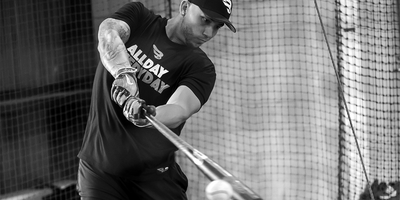How to Keep Your Baseball Glove Clean and in Top Shape
Keeping your baseball glove clean and well-maintained ensures it stays comfortable, performs at its best, and lasts for many seasons. Regular care prevents the leather from drying out, cracking, or losing its shape, so you can focus on your game with confidence.
Why Glove Care Matters
A baseball glove is more than equipment, it’s an extension of your hand. Over time, dirt, sweat, and moisture can make the leather stiff and harder to handle. A well-maintained glove feels natural, closes easily on the ball, and lasts longer. Taking just a few minutes after each practice or game can make a big difference in performance and longevity.
Step 1: Remove Dirt and Debris
After each use, remove dirt and dust to keep the leather in top condition:
-
Use a soft brush or cloth to clean seams, laces, and the pocket.
-
For stubborn dirt or mud, lightly dampen a cloth and gently wipe the surface.
-
Avoid soaking the glove or using harsh cleaners, as excessive moisture can damage the leather.
Step 2: Condition the Leather
Leather conditioner keeps your glove soft, flexible, and ready for action:
-
Apply a thin layer of glove oil or conditioner with a cloth or your hands.
-
Focus on the palm, fingers, and laces, making sure the conditioner is evenly distributed.
-
Wipe off any excess to avoid greasy buildup.
Conditioning every few weeks during the season prevents cracks and keeps the glove responsive.
Step 3: Flex and Work the Glove
After conditioning, gently flex the glove to help the leather absorb the oil and soften:
-
Bend the fingers and hinge points to loosen stiffness.
-
Roll the leather in different directions for even flexibility.
-
Place a ball in the pocket and squeeze it to maintain the shape.
Step 4: Store Properly
How you store your glove impacts its lifespan:
-
Keep it in a cool, dry place away from direct sunlight.
-
Store with a ball in the pocket to preserve the shape.
-
Avoid stacking heavy items on top of it, which can warp the leather.
Proper storage helps your glove stay flexible and ready for game day.
Step 5: Regular Maintenance
-
Clean off dirt after every game or practice.
-
Condition as needed when the leather feels dry.
-
Check laces for wear and replace them to maintain integrity.
Consistent care ensures your glove stays comfortable, performs reliably, and lasts season after season.
Mistakes to Avoid
-
Never soak your glove in water or use harsh chemicals.
-
Don’t over-condition, too much oil can make it heavy or slippery.
-
Avoid extreme temperatures, which can dry out or crack the leather.
Patience and regular care are always better than shortcuts that can damage your glove.
Final Word
Keeping your baseball glove clean and in top shape is simple with a few key steps. By removing dirt, conditioning the leather, flexing it properly, and storing it correctly, your glove will stay soft, reliable, and ready for every catch.
Explore our Pro Select Gloves and give your glove the care it deserves for years of performance.






